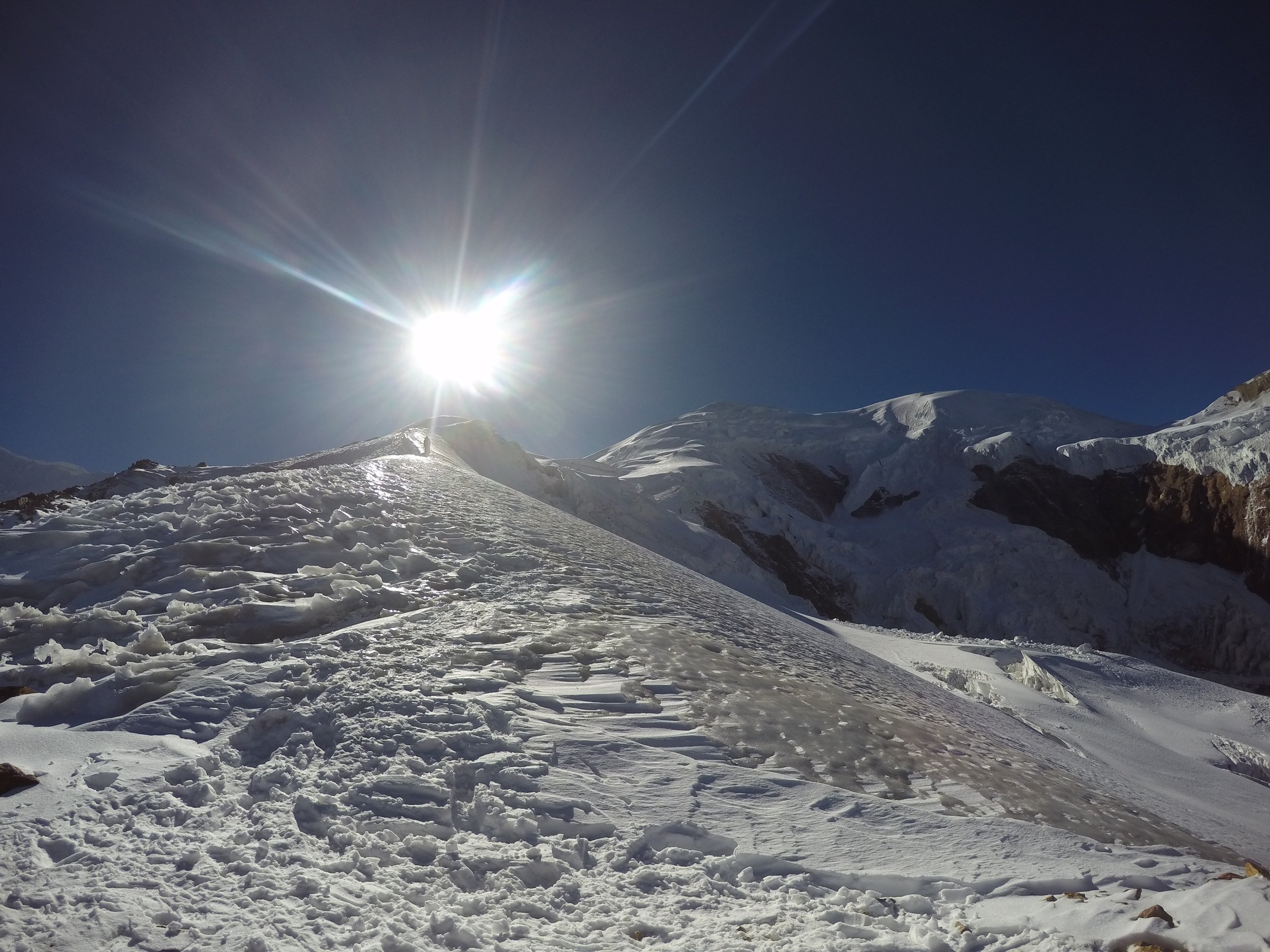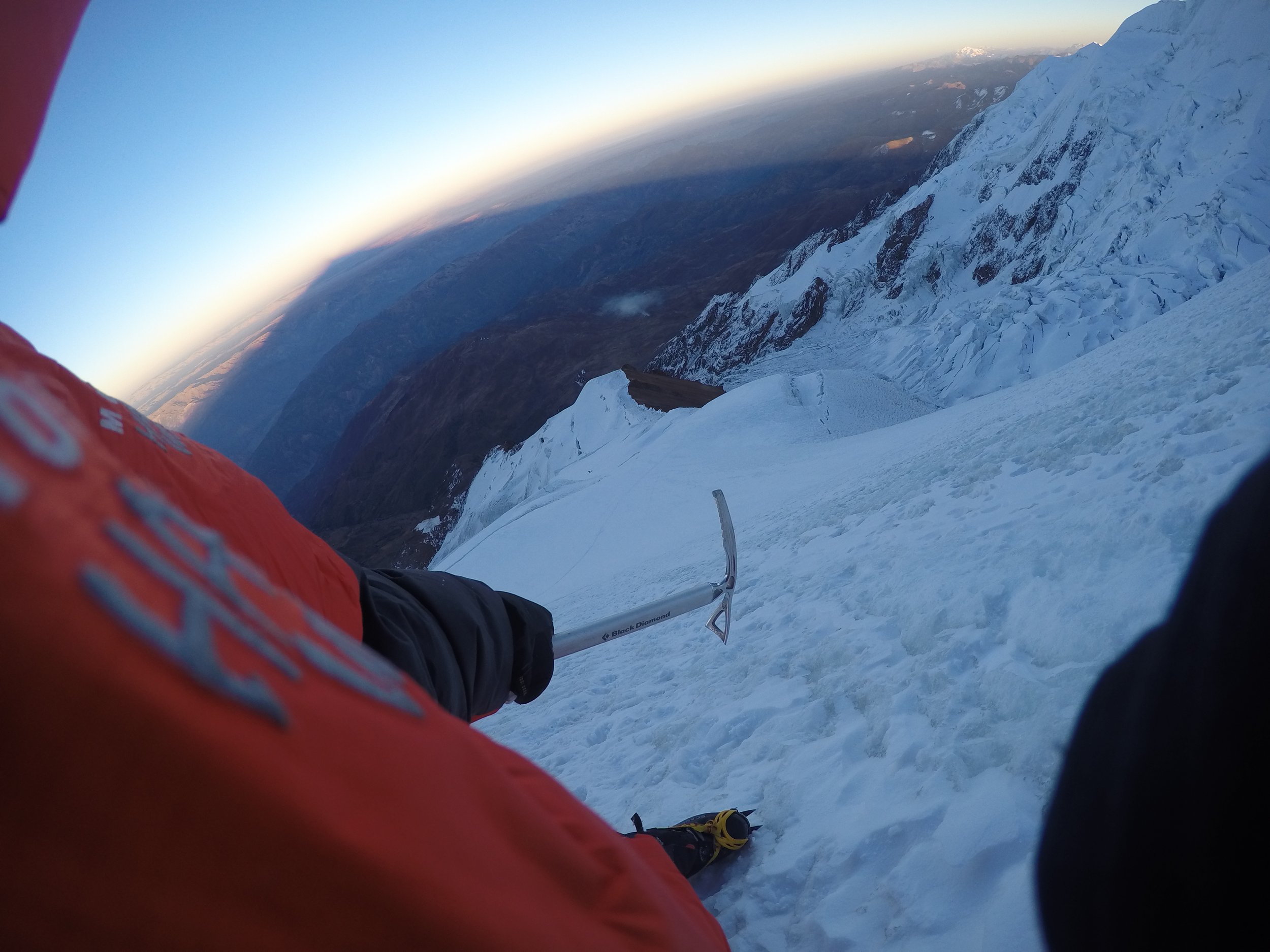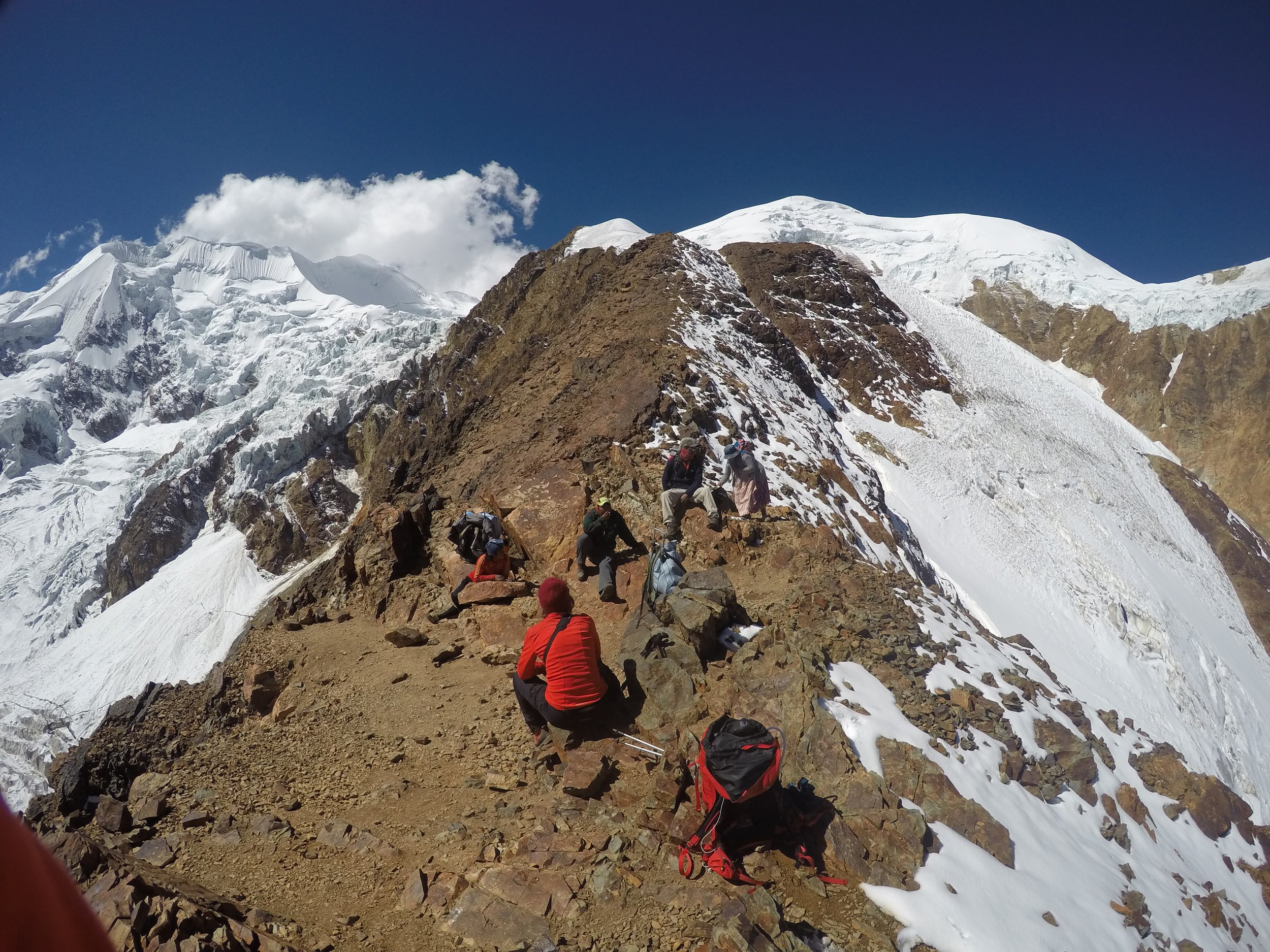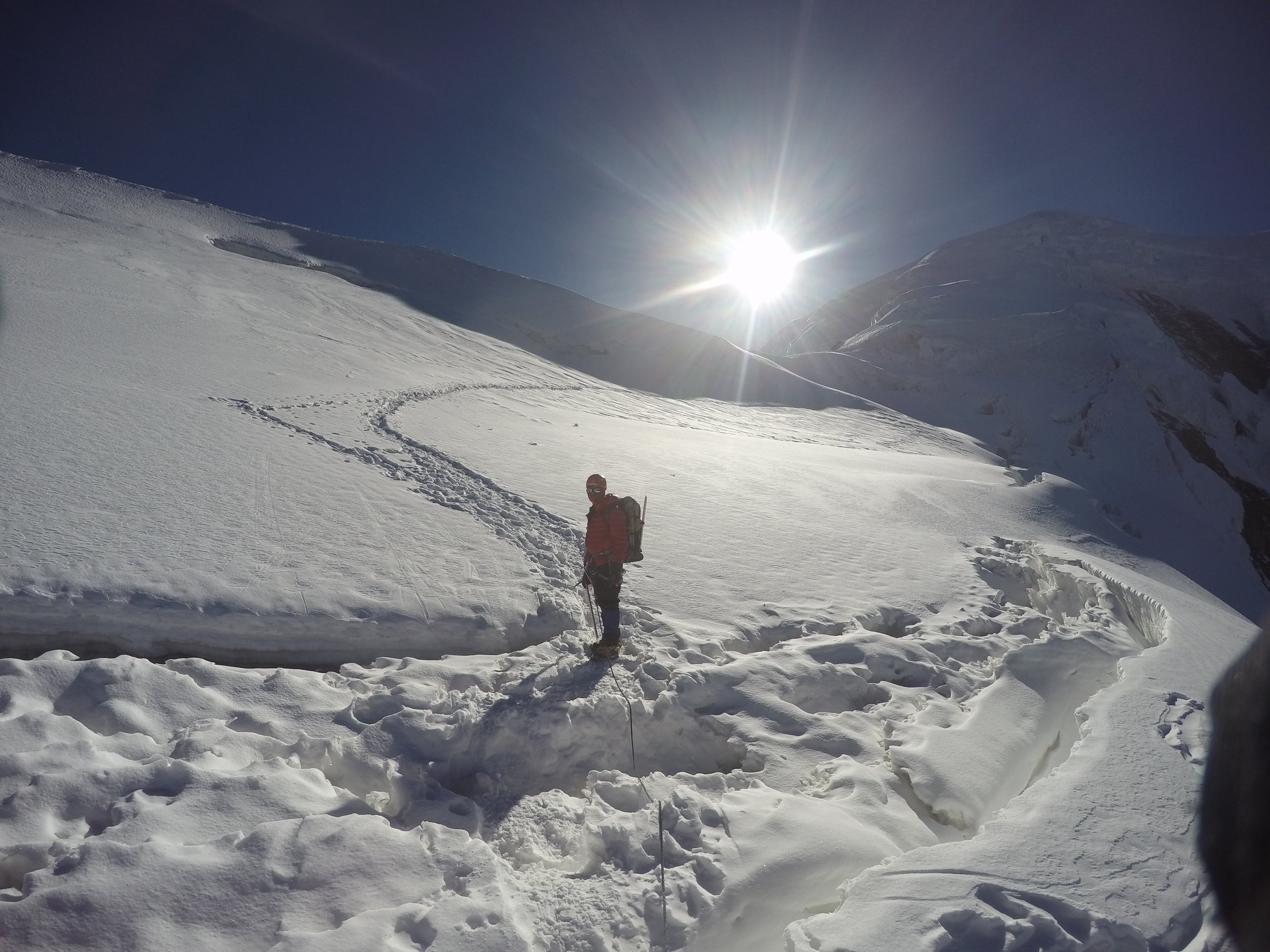Illimani
when you don’t summit
Mountain: Illimani
Altitude: 21,122 ft | 6,438 m
Location: Cordillera Real, Bolivia 16.6333° S, 67.7908° WMountaineering is an interesting sport with a binary outcome: either you summit or you don’t. Those who climb, love to share success stories about conquering the summit. However, we are less eager to share stories when we fail to reach the summit. Here is mine.
it’s 6 am. We have been climbing mt.Illimani for the past 5 hours through a very crisp and calm night. But right at the sunrise, it became twice colder. The thing is that the minimum temperature on Earth occurs about 30 minutes to 1 hour after sunrise (just when you start to get hope that the worst of the climb is over and you are finally going to warm up). The reason for this drop at dawn is the sun provides heat to the upper portions of the atmosphere and incoming shortwave radiation remains less than outgoing longwave radiation. Therefore cooling continues until the sun rises higher in the sky and the balance shifts. I knew that and thankfully packed my “last-resort-arctic-ready parka”. I put parka on but it doesn’t help, so I resort to clenching exercises of toes and fingers, to get the blood flowing to my frozen endings.
We arrive to the ice wall that stretches 200 meters. It’s unofficially called “stairway to heaven” — an 80° incline at about 6300 meters. I look at my guide, he gives me a calm glance and says “let’s go up”. At this point we are the only people above 5500 meters (our cook and porters are comfortable in their sleeping bags at high camp, Nido de Condores, at 5450m). So we start working on it — he climbs first, and i follow him. The climb is very rhythmical, a kind of soothing — right crampon, left crampon, right hand with ice axe, left hand on the wall, right crampon, left crampon, right hand, left hand. But after meditating in this vertical position for a while I did something that I usually never do — I looked down. And below was just a straight drop of all the distance that i have just worked on. And above there was not even a hint of the end — it was just a wall. My brain started feeling uneasy. I shout to Julio(my guide): “How long is to the top?”. We are separated by a 2 meter rope. He stopped for a minute and screams back: “Half way”. That means for another 40 or so minutes I would be climbing up. It also means that the drop in the bottom will be increasing. And then I would have to do it again after summit. And I panicked. Suddenly all tiredness, the feeling of frozen toes, windburned face came to consciousness and my body refused to move up.
I did not summit Illimani. I did not summit it because I got scared. And when in my mind I decided that I was scared, there was nothing in the world that would change my mind. Fear is an interesting phenomena — once it’s activated it works like melatonin on your physical performance — you discard months of training, long commute to Bolivia, dreams and aspirations, will power, you discard it all and just working towards the feeling of comfort and safety. We stopped an hour away from the summit and climbed another 5 hours down through ridges, crevices and penitentes and then another 5 hours to the base camp.
Every night for the past month, just before drifting off to sleep, I close my eyes I see the “stairway to heaven”. I see myself on it, I remember the numbing feeling of cold in my toes, i remember steep snowy ridges on the side and the irritating pressure of the helmet. And the thought that keeps rotating in my head is why did I turn back — I was not that tired, I was cold — but mountain climbing is cold. I keep telling myself that it was an amazing experience regardless — I have learned a lot and next time on another mountain I will be better prepared. But the summit was so close…




